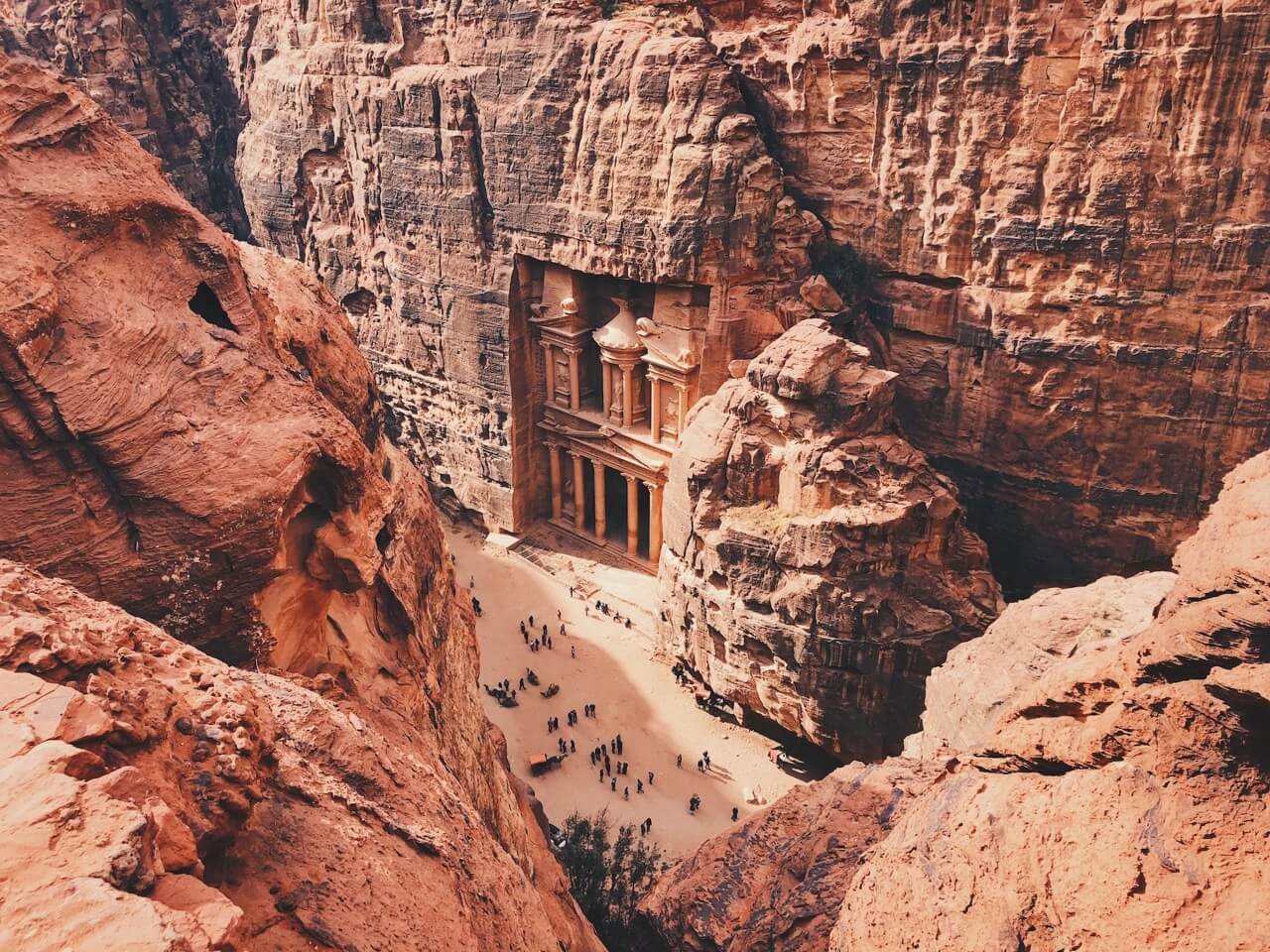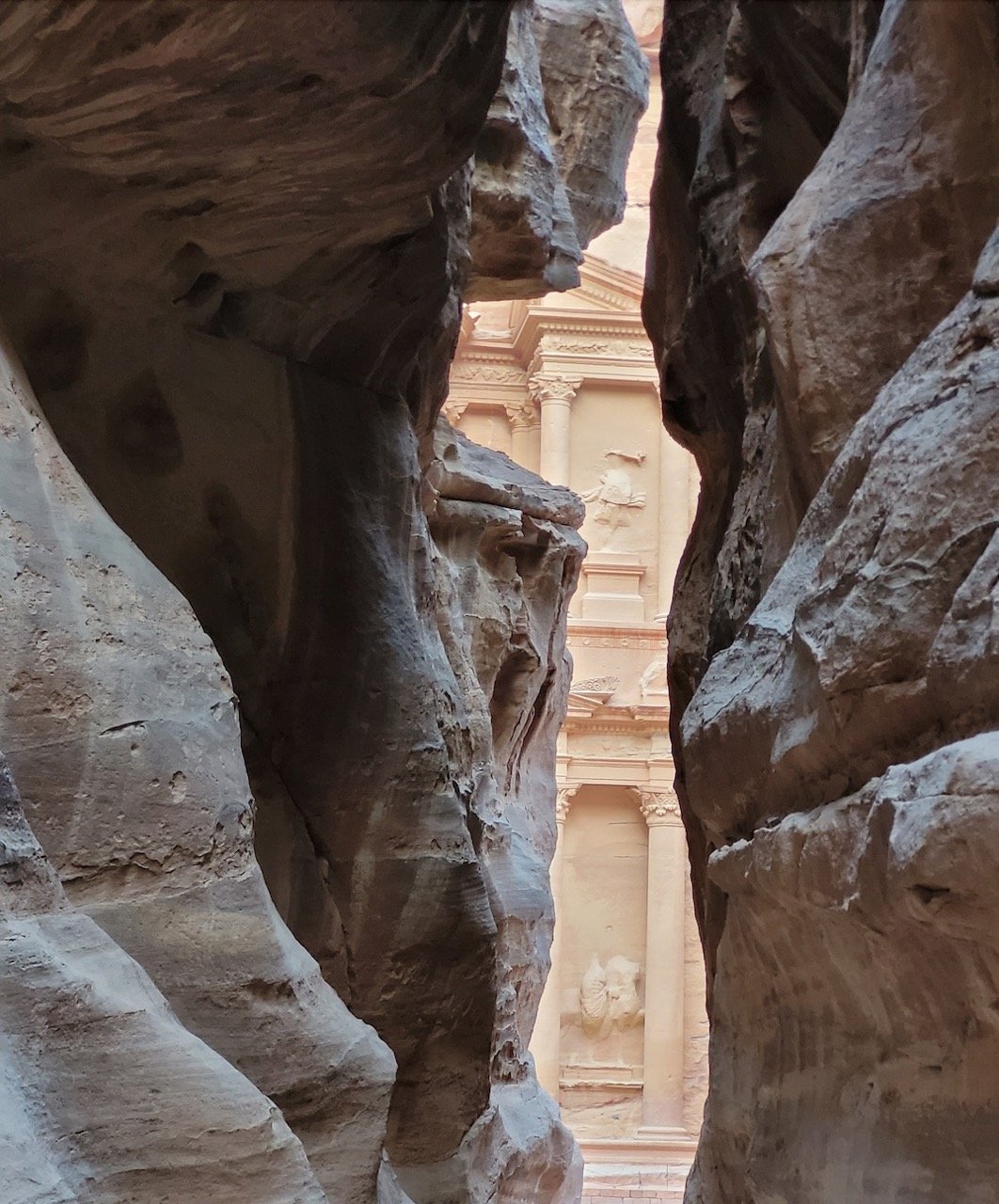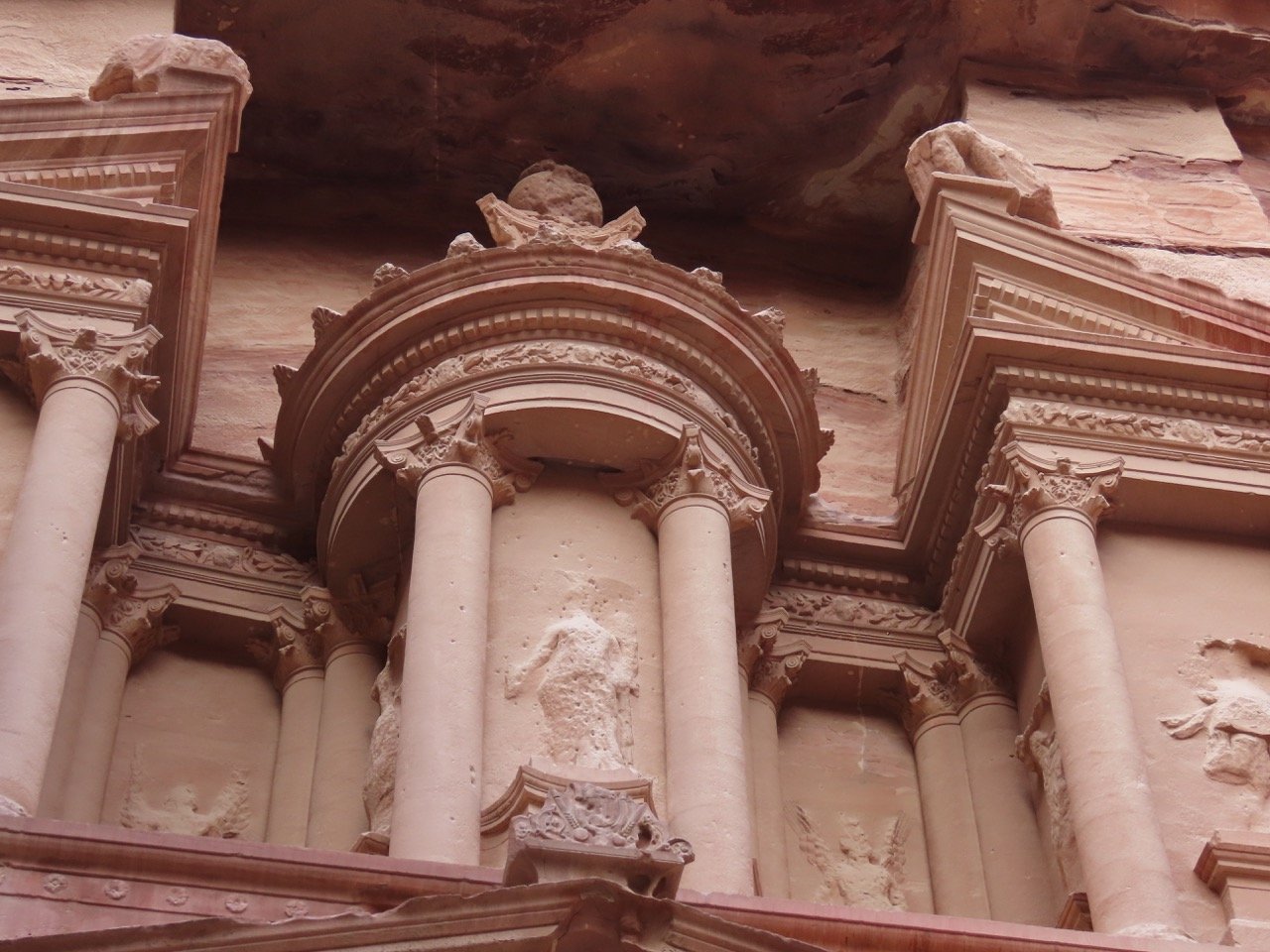Visiting Petra, Jordan: A Guide to Petra, the Country's Most-Visited Tourist Attraction
Visiting Petra is high up on the list of many travelers, and for very good reason. Cynthia David walks us through her visit to one of the Middle East’s most sought-after sights and gives you the details you need to have a truly memorable visit.
The ancient city of Petra. Photo Credit: Unsplash
It was still dark the morning we entered the gate to the ancient city of Petra in southern Jordan, one of the world’s most famous archeological sites.
The courtyard surrounding the visitor’s centre was hushed save for a few stray dogs, the souvenir shops closed.
As we followed a sprinkling of tourists down the paved path, our guide Mohammed pointed out several rock formations, including the Obelisk Tomb, fronted by four skinny pyramids, carved by the Nabataean people who lived and prospered here in the 1st century AD. He also drew our attention to the sophisticated dam and channels that diverted floodwaters and collected fresh water for the city’s residents.
Petra Through The Ages
Well before the arrival of the visitor's centre, Petra was a desert town carved into the sandstone cliffs by the Nabataeans, the Arab nomads who settled in the region around the 4th century BC. By the 1st century AD, Petra hosted traders from every part of the ancient world—trading all kinds of goods, from silk and spices to gold and incense.
Petra joined the Roman Empire in the year 106 AD, but after some time, the town declined as trade routes shifted. A series of earthquakes weakened the city further, and by the 7th century, the city was abandoned.
The city was rediscovered in 1812 by Swiss explorer Johann Ludwig Burckhardt. Infamously adopting the dress and effect of a local, Burckhardt persuaded his guides to lead him into Petra's hidden ruins, which had been unseen by anyone from outside the region for hundreds of years.
Today, Petra is a UNESCO World Heritage Site and one of the New Seven Wonders of the World.
Exploring Petra - Walking Through the Siq to Al-Khazneh
Dawn broke as we arrived at the Siq, a dramatic gorge of red, cream and orange sandstone that swirls and soars 80 meters high, making us feel like ants.
As we walked the 1.2-km path, just three metres wide in places, we marvelled at the natural rock formations and sculptures the ancients left behind, including a life-sized relief of a now headless camel driver and his camels eroded over time.
The scene represents the caravans that passed through here from China, India, Egypt, Greece and Italy to trade spices, incense, gold, animals, perfumes, ivory and more, bringing the Nabataeans wealth and power until the middle of the 7th century.
“How far do you think we are from the Treasury?” Mohammed asked, with a laugh.
A hidden city through the rocks. Photo Credit(s): Cynthia David
Moments later we gasped as the stone walls parted to reveal Petra’s masterpiece, Al-Khazneh, Arabic for “Treasury.” Rising 12 stories high and carved by hand from a rock face of rose-coloured sandstone, the façade might have been completed yesterday with its exquisitely-preserved Corinthian capitals, friezes and figures.
Please note: This post may contain affiliate links. That means we may get a small commission for some of our recommendations at no extra cost to you.
Entering the Ancient City of Petra
While some tourists may only come this far, a vast city awaits those with a day or two to explore its 10,000 years of history.
Though the Jordanian government forced its most recent inhabitants, the Bedouins, to move to new lodgings visible from the site when Petra became a UNESCO World Heritage site in 1985, they still run the site’s many souvenir shops, clothing, rug and tea shops.
They also manage the trains of donkeys and camels pressed into service to transport visitors around the site. The young Bedouin drivers bear a striking resemblance to a swashbuckling Johnny Depp as Captain Jack with their kohl-rimmed eyes and red-checked Arab scarf twisted around their heads, a look shared by many young male visitors.
The Treasury, in all its majesty. Photo Credit(s): Cynthia David
Amphitheatres, Markets & Mosaics
We walked for miles in the September heat through the rocky, sand-coloured landscape, stopping to admire intricate tombs cut out of the mountainside. Their rich colours occasionally bleed into one another like melting ice cream. Sit in the vast dark hall of an empty temple admiring the art on the walls, here a flowered branch, there the sweeping tail of a fish, all with a story to tell. Imagine joining the throngs sitting on the now-quiet stone steps of the Roman-style amphitheatre or admire the mosaic floor tiles in the 5th-century Christian church built by the Byzantines.
Petra, as many will know, also provided a set for Harrison Ford’s Indiana Jones and The Last Crusade in 1989.
The bustling market in front of the amphitheatre is the place to buy souvenirs, perhaps a wooden camel, mosaic trivet, colourful leggings or a personalized scene in a vase hand-crafted from coloured sand. You can even learn about and buy real frankincense and myrrh, which are sold as essential oils, resins and powders as they would have been in ancient times.
Hiking Around Petra
For a hike with a view of the city, follow the winding stone steps of the Ad-Deir (Monastery) trail to the top. Before starting the intense climb into the mountain, stop for a fresh-squeezed pomegranate juice or a Petra beer in the outdoor cafe connected to the Marriott Hotel. In fact, hotels appear to be the only place where beer is served freely in Jordan, though public liquor stores are a common sight.
Along the trail, you’ll pass small shops selling clothing and drinks. One even advertised ice cream. Though the vendors will plead for your business, they aren’t pushy about it.
Shops along the Monastery Trail in Petra. Photo Credit: Cynthia David
At the top, expect to do a double-take. Yes, the façade here overlooking an empty square is a replica of the famous Treasury far below, but it looks faded and unfinished. Archeologists agree that the hall inside was initially used as a meeting space, but crosses carved in the wall indicate it became a Christian chapel in the early 2nd century, hence the name Monastery.
Stop for refreshment in the shade beside the busy snack stand with fellow tourists from around the world before heading back down the now-crowded trail, admiring the rugged rock formations along the way.
At Petra, It Pays to Get Up Early
By the time we reached the Treasury around 3 p.m., the place was a mob scene of tourists and camels. Walking back to the Siq to the main entrance was a completely different experience from our magical early morning walk as we passed groups of people chatting in every language and dodged golf carts zipping people to and from the entrance.
It definitely was worth waking up at 4 a.m.
An Unforgettable Day at Petra
The Royal Tombs. Photo Credit: Cynthia David
Another lively scene awaited us at the entrance, where tourists milled around the shops and restaurants. We escaped to the air-conditioned Zen-like calm of the Petra Museum, a gift from Japan opened in 2019. Here, learn more about the area’s history from the Stone Age to the present and view more than 300 splendid artifacts found in and around Petra, from limestone busts to mosaic floors.
Visiting the Wadi Musa and the Wadi Rum
From the site, you can take a taxi or walk about 15 minutes (uphill!) to Wadi Musa, the town filled with hotels, restaurants and shops that have sprung up around the archeological site. We stayed at the Seven Wonders Hotel, which was fitting since Petra became one of the Seven New Wonders of the World in 2007 and was chosen by a vote of 100 million people.
Another option, only 90 minutes south, is a day trip to the Wadi Rum. This otherworldly desert landscape is a go-to filming location that has been featured in films like Lawrence of Arabia (1962), Star Wars: The Rise of the Skywalker (2019) and Dune: Part One (2021) and Part Two (2024).
Before You Go - Check Out The Jordan Pass
If you're considering spending at least one day visiting other parts of Jordan (including the capital city of Amman), you need to get the Jordan Pass before you go. This government-backed travel package gives you full access to over 40 major tourist attractions around the country - and they'll waive your visa fee if you spend three nights in Jordan. You should purchase yours online ahead of time to take advantage of the visa waiver.
Cynthia David is a Toronto-based freelance journalist, seasoned food writer, world traveller, fruit and veg aficionado, ESL instructor and wild mushroom forager. Work has taken her from food editor at the Toronto Sun and London Free Press to a summer’s stage at a Michelin restaurant in France and a year working for Radio Beijing. She has been published in leading Canadian newspapers and magazines.







